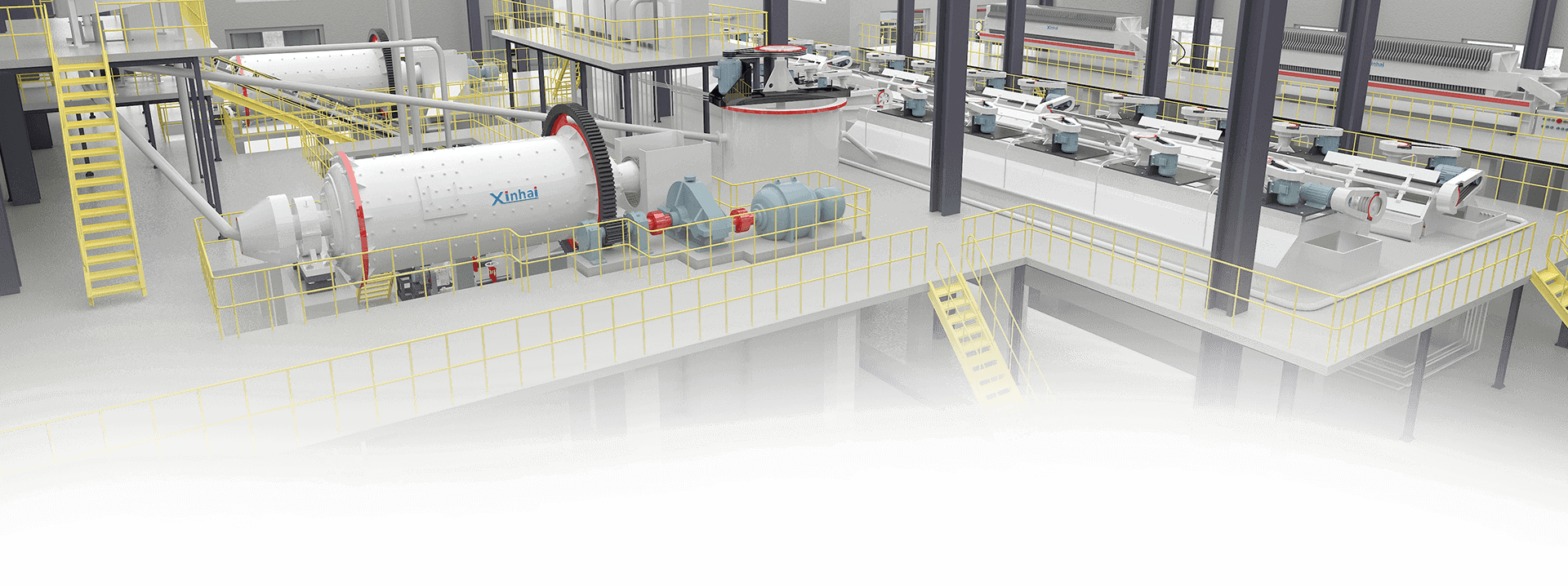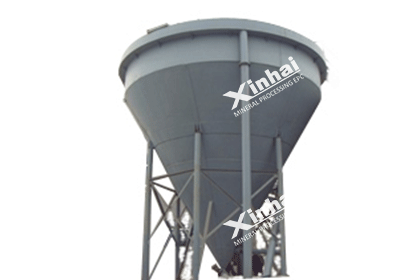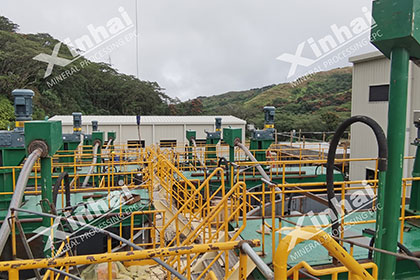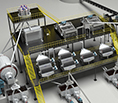How is Quartz Extracted: Flotation vs. Acid Leaching
 Sheena
Sheena
 Aug 23, 2025
Aug 23, 2025
 626
626
If you want to know more details about equipment, solutions, etc, please click the button below for free consultation, or leave your requirements!

Quartz-ore-extaction-plant
Among various quartz processing methods, flotation and acid leaching are two of the most widely applied techniques. Each method has unique advantages and limitations, and choosing the right one depends on ore characteristics, desired product quality, and economic considerations. This article provides a detailed comparison of flotation and acid leaching in quartz beneficiation.
01Why Quartz Processing Is Necessary
BackAlthough quartz appears pure in many deposits, natural ore bodies often contain contaminants that reduce its industrial value. For example:
Iron impurities (hematite, limonite) can discolor quartz and limit its use in glass and optics.
Feldspar and mica lower purity and affect downstream applications.
Clay minerals reduce recovery efficiency and cause operational challenges.
Therefore, quartz beneficiation aims to:
Remove gangue minerals.
Improve SiO₂ content (often >99% for high-purity quartz).
Enhance whiteness and optical properties.
02Quartz Processing by Flotation
BackPrinciple of Flotation
Flotation is a physical-chemical separation process that utilizes differences in surface properties between quartz and its impurities. Collectors, frothers, and pH regulators are added to a slurry, allowing unwanted minerals to attach to air bubbles while purified quartz remains in the pulp.
Process Flow of Quartz Flotation
Crushing and Grinding – Quartz ore is reduced to a suitable particle size.
Desliming – Removal of clay and fine slimes that interfere with flotation.
Conditioning – Reagents such as hydrofluoric acid (HF) or cationic collectors (amines) are added.
Flotation Separation – Feldspar, mica, and iron oxides float away, leaving quartz in the cell.
Concentration and Dewatering – The purified quartz concentrate is thickened, filtered, and dried.
Advantages of Flotation
Effective for removing feldspar, mica, and iron oxides.
Relatively lower acid consumption compared to leaching.
Suitable for large-scale processing of quartz with multiple impurities.
Limitations of Flotation
Requires careful control of reagents, pH, and water chemistry.
Use of hydrofluoric acid poses environmental and safety risks.
Fine quartz particles may be lost during flotation.

03Quartz Processing by Acid Leaching
BackPrinciple of Acid Leaching
Acid leaching is a chemical purification process that uses strong acids to dissolve and remove impurities within quartz grains. Unlike flotation, which separates minerals based on surface properties, acid leaching works at a chemical level, targeting impurities such as iron, aluminum, and trace metals.
Common Leaching Agents
Hydrochloric acid (HCl): Removes iron oxides.
Sulfuric acid (H₂SO₄): Dissolves metallic impurities.
Hydrofluoric acid (HF): Particularly effective for removing aluminum and titanium impurities.
Mixed acid leaching: Combination of HCl, HF, and H₂SO₄ for high-purity quartz production.
Process Flow of Acid Leaching
Pre-treatment: Crushing, grinding, and desliming of quartz ore.
Leaching Stage: Quartz slurry is mixed with acid solutions under controlled temperature and time.
Washing and Neutralization: Residual acid is removed with water, followed by neutralization with alkali.
Drying: The purified quartz is dried to obtain final product.
Advantages of Acid Leaching
Produces ultra-high-purity quartz (SiO₂ > 99.9%).
Effective for removing trace metallic impurities that flotation cannot handle.
Essential for applications in semiconductors, photovoltaics, and optics.
Limitations of Acid Leaching
High consumption of strong acids (especially HF).
Requires strict safety and environmental management.
More expensive than flotation due to chemical costs and waste treatment.

04Flotation vs. Acid Leaching: A Comparison
Back| Aspect | Flotation | Acid Leaching |
|---|---|---|
| Main Function | Removes feldspar, mica, iron oxides | Removes trace metals, iron, aluminum, titanium |
| Purity Level | 95–99% SiO₂ | 99.5–99.9% SiO₂ |
| Best Use Case | Glass, ceramics, construction materials | Electronics, optics, photovoltaic industry |
| Cost | Lower operational cost | Higher chemical and waste treatment cost |
| Environmental Impact | Moderate (depends on HF use) | High (acid disposal, HF risk) |
| Processing Scale | Large-scale beneficiation plants | Specialized high-purity quartz plants |
05Which Method Should You Choose?
BackThe choice between flotation and acid leaching depends on end-use requirements:
For general industrial use (glass, ceramics, refractory materials), flotation alone is often sufficient and cost-effective.
For high-tech applications (semiconductors, solar panels, fiber optics), acid leaching is necessary to achieve ultra-high-purity quartz.
In many cases, a combined process is used: flotation first to remove coarse impurities, followed by acid leaching to achieve final purification.
06Conclusion
BackQuartz processing plays a vital role in upgrading raw ore into high-value industrial materials. Both flotation and acid leaching are widely applied, each offering unique benefits.
Flotation is cost-effective, efficient for bulk separation, and widely used in large-scale quartz beneficiation.
Acid leaching is indispensable when the target is ultra-pure quartz required in advanced industries.
Ultimately, the optimal solution often lies in combining flotation and acid leaching to balance cost, efficiency, and purity. As demand for high-purity quartz continues to grow, particularly in electronics and renewable energy, selecting the right processing method will remain a decisive factor for mining and processing companies.
 +86 183 3575 8886
+86 183 3575 8886 pinklaurabao@gmail.com
pinklaurabao@gmail.com




 Message
Message Chat Now
Chat Now
















